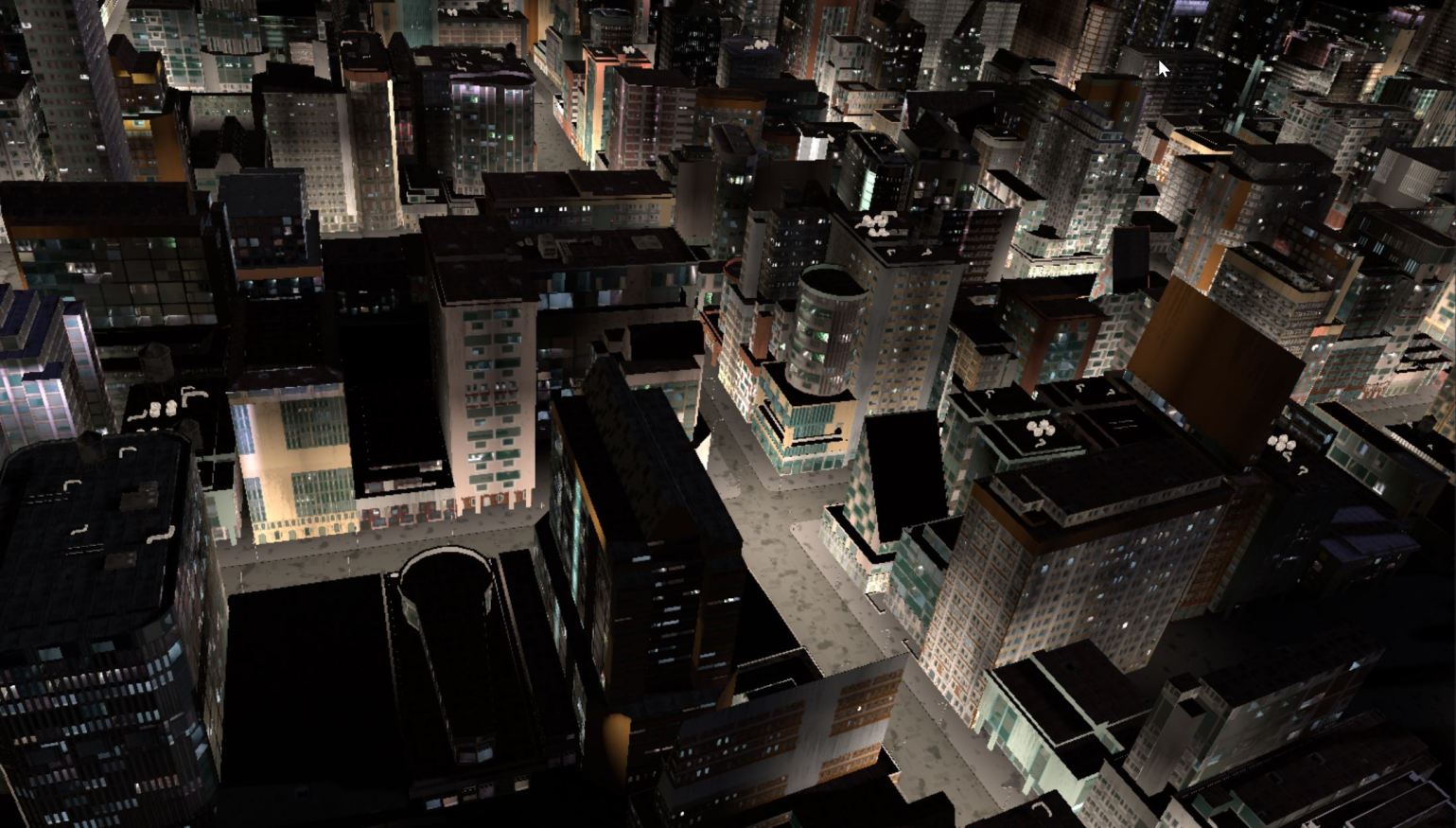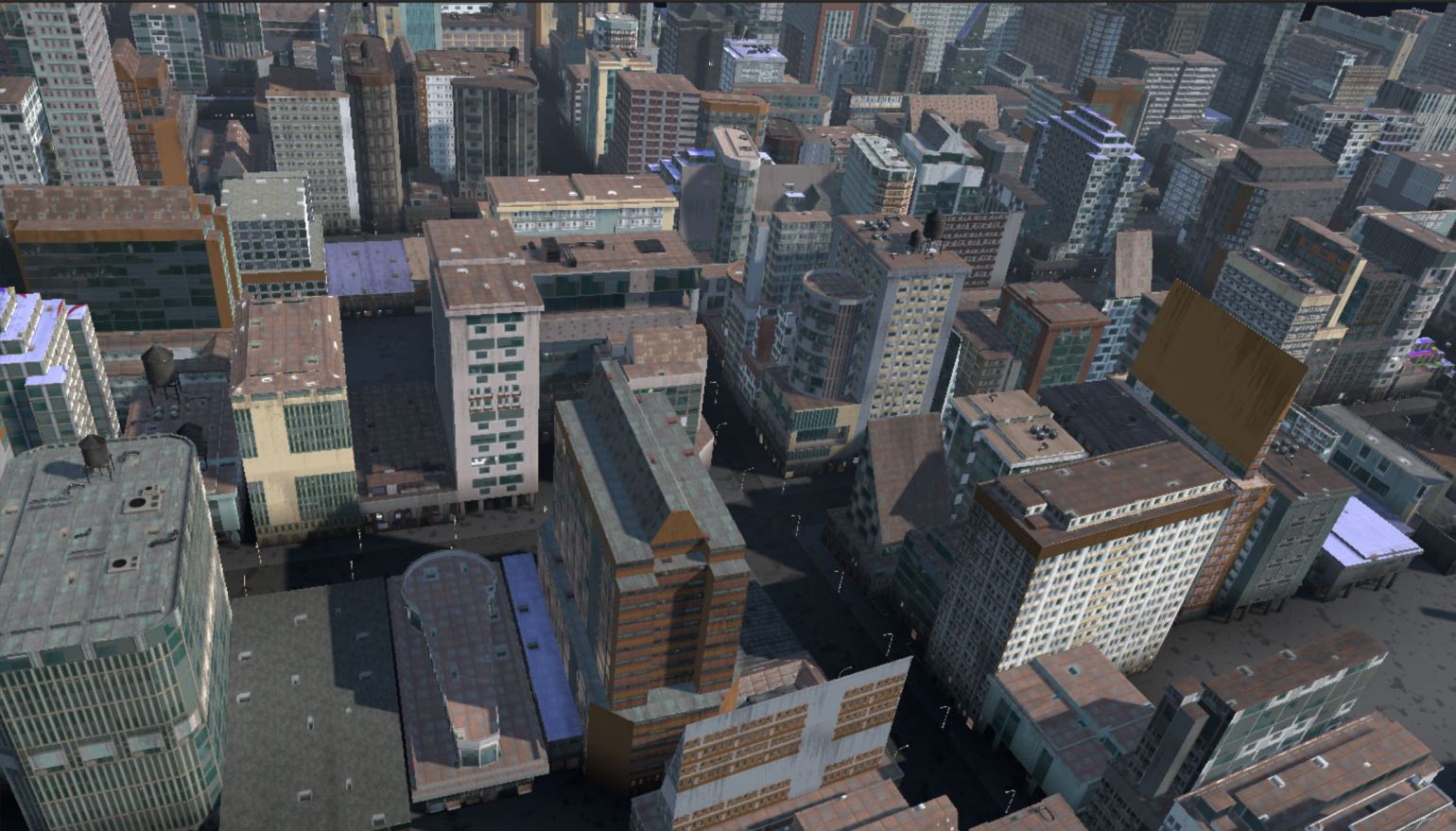A final version is almost here
I have been working a lot on a new version of CScape. It took me some time to get here as this is one of the biggest updates that really pushes boundaries of what can be done in realtime CG graphics right now and essentially on new ways to do something that otherwise would require much greater processing power from GPU and CPU.
One of the biggest probems with big open worlds like cities is a lighting. Baked lighting can’t bee used efficiently as a baking gets slow with worlds that cover large surfaces. While a baked lighting could be used on a simple terrain, when we have to bake this surface into 3 dimensional solution, we are running pretty easily out of memory and into a complexity that exceeds bearable rendering times.
A while ago CScape introduced a system called Re-lighting, a lighting system dedicated for simulating nightime lighting. It was pretty rough system, that gets pushed to a new level with latest release. Instead of using some approximations, now it uses baking or realtime calculations for displaying city lights along thee streets.

As an add to this system, it now also uses it’s own Ambient Occlusion feature (Top View Ambient Occlusion), suited also for daylight.

Both of images were rendered without using any image effects. Also, nighttime image doesn’t use any Unity light and relies only on CScape RE-lighting. A daytime image uses only one shadow directional light. But this shadow light doesn’t impact performance a lot, because of low drawcalls that CScape uses.
CScape is known for it’s good performance and low drawcall usage in Unity. This is mainly due to that it uses one single procedural material/shader for all building faccades. This helped a lot Static batching included in Unity, giving an incredible performance boost. New version of CScape goes further – it includes automatic mesh grouping and merging, reducing even more a CPU usage. Also, many shaders were overwritten so that they use less Texture samplers, augmenting the performance even more. We are now using also compressed textures, giving us a possibility to feed much more data into procedural shaders. Even on mobile platforms.
And last but not least:
We are excited to introduce CScape Toolset Light, a new CScape feature that is a feature for all those that wan’t to make their own faccade designs for SCape. It is simple and intuitive tool based on standard 2D workflow in Unity, that gives you a possibility to easily create faccade designs. Here is a small snapshot of what it does and how it works:
Into the VR
News on CScape
